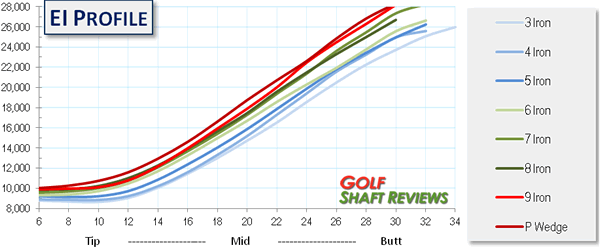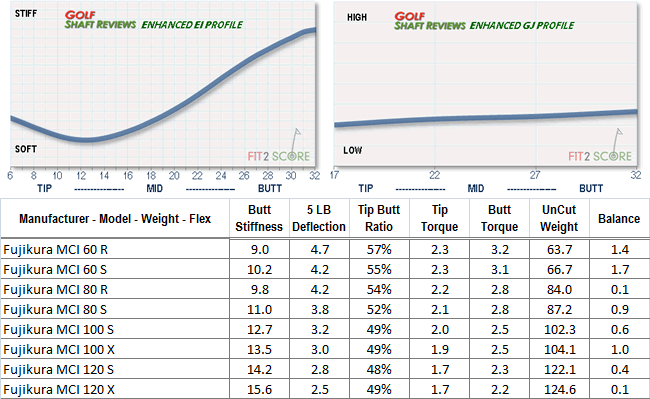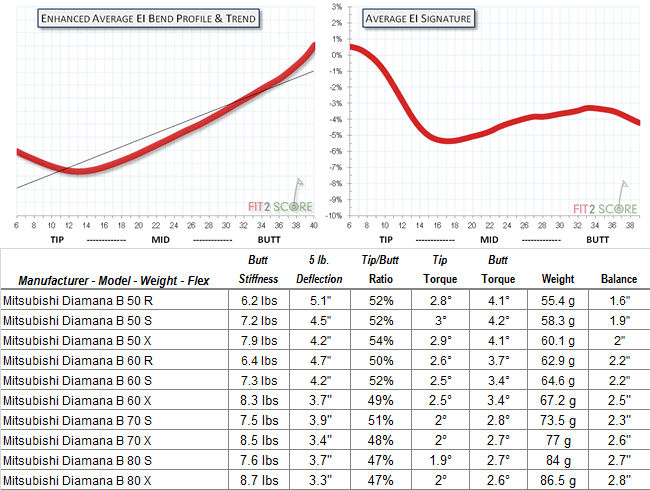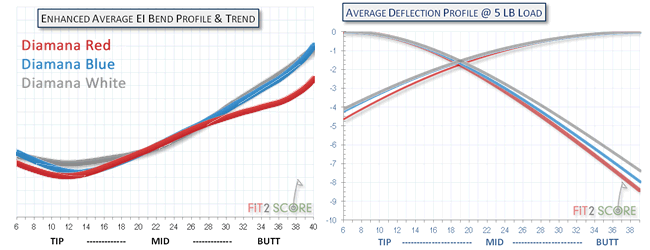Fujikura MCI Metal Composite Iron Golf Shaft
By Russ Ryden, A Golf Digest America’s 100 Best Clubfitter
Fit2Score, Dallas Fort Worth, Texas
We are in a new era in iron shafts. Composite shafts have found their way to the PGA Tour. Acceptance of ‘graphite’ shafts by tour pros means serious amateurs will consider playing them. The shaft companies are responding with tour quality composite shafts. The MCI shaft from Fujikura is truly a composite, it is made from graphite with a metal fiber wrapped into the tip section.
The bend profile is seen in many of the current generation of performance orientated iron shafts. It resembles the design seen in driver shafts. Much higher tip to butt rations than we typically see in iron shafts. That is going to create a propensity for higher launch. I confirmed that on a range. A cavity back iron fitted with the MCI launched the same as a game enhancement high launch design head fitted with a traditional bend profile design composite shaft. The feel was much the same. And for those looking for shock absorption, thin ball strikes are muted, the vibration is not transmitted to the hands. If your iron game would be improved by a little extra launch, you should be testing the Fujikura MCI shaft. The tip is similar to a Dynamic Gold S300. A stiffer butt creates a higher tip to butt ratio and a higher launch propensity.
Radial consistency of the MCI is very good. The average of our review samples was 99.1% with a 0.6 Standard Deviations. Spine alignment is not necessary with these shafts. Fujikura marks every shaft with one of the flat line oscillation planes and puts the label on that plane. Installing the shafts label down is the equivalent of FLO alignment.
A view of factory cut iron shafts is not complete without looking a the makeup of the complete set. This is the first of many iron shaft reviews that will be updated with this important view of set profiles.
I avoid using the word constant weight tapers because not all cut to length iron sets are constant weigh nor are they tapers. The Fujikura MCI is constant weight, averaging 102 grams uncut, but it is .370 parallel tipped. The set illustrated below is the 100S. The EI profiles ascend consistently from shaft to shaft in the set.

To understand this aspect of shaft sets, look at the set profiles of the UST Recoil. By comparing these to set profiles you see why I referred to the UST Recoil as a flighted set. By contrast, the Fujikura MCI is similar to most constant weight steel shaft set profiles.





